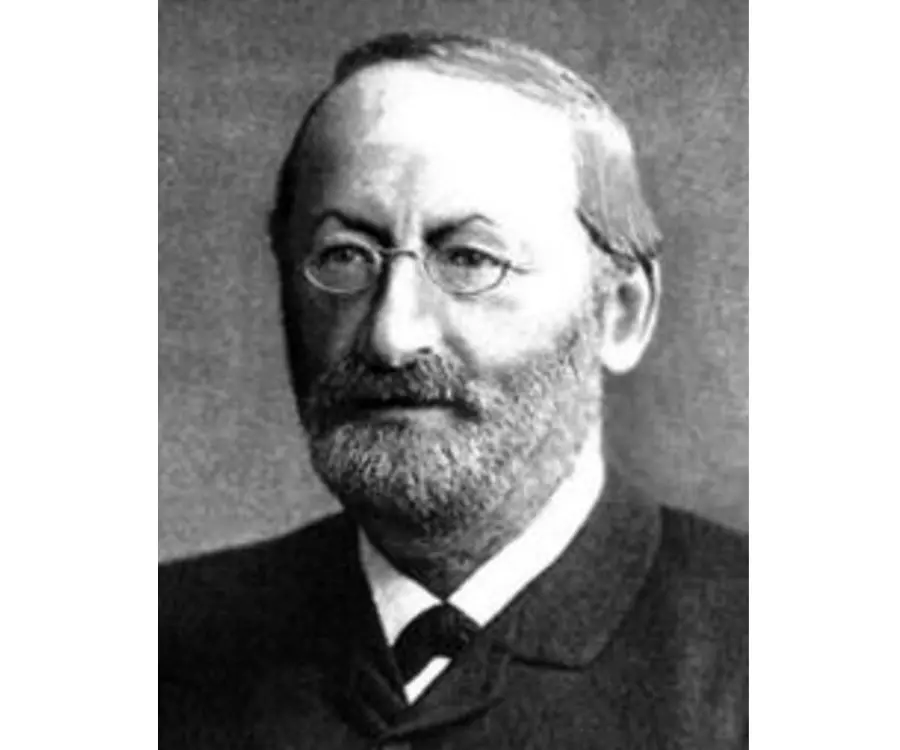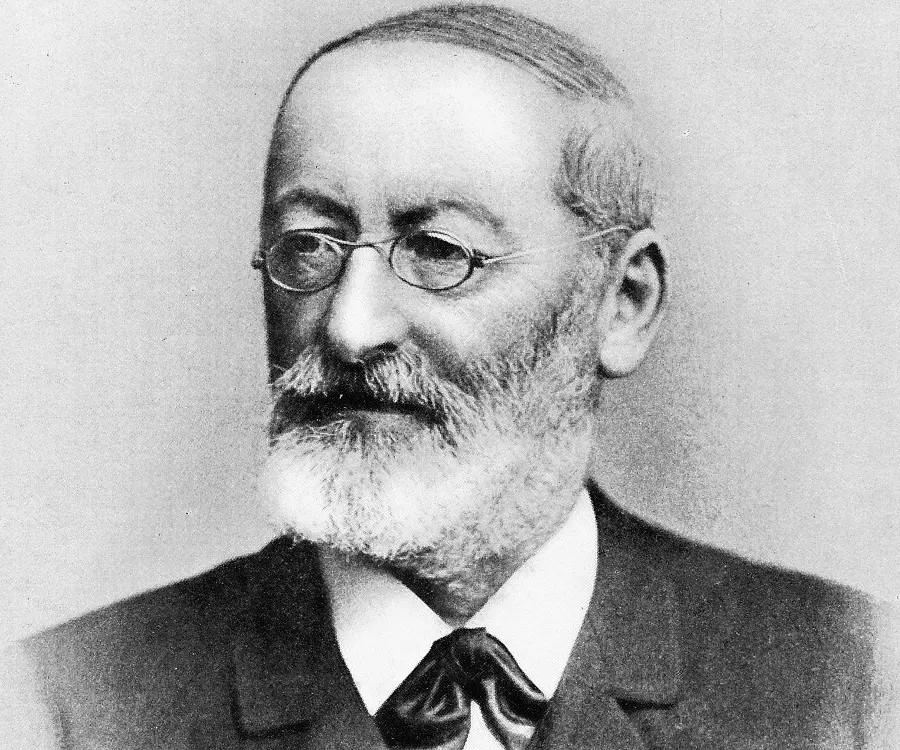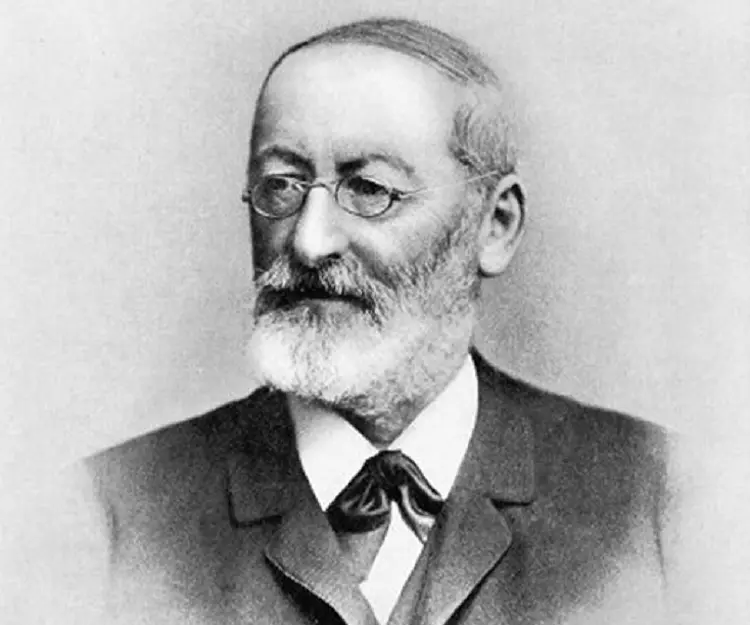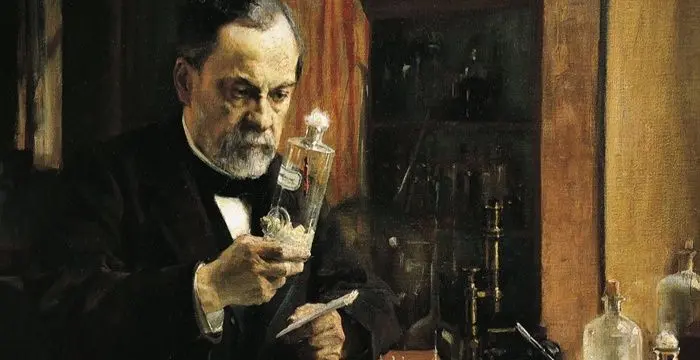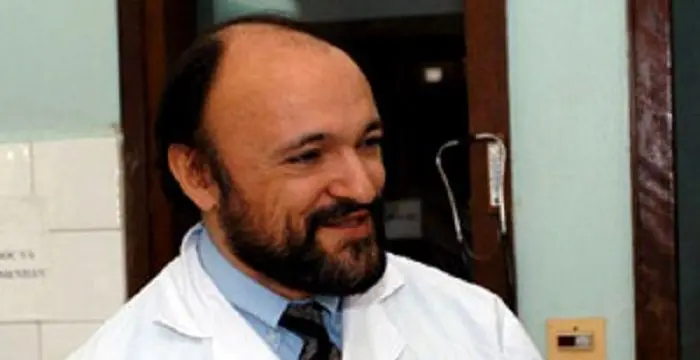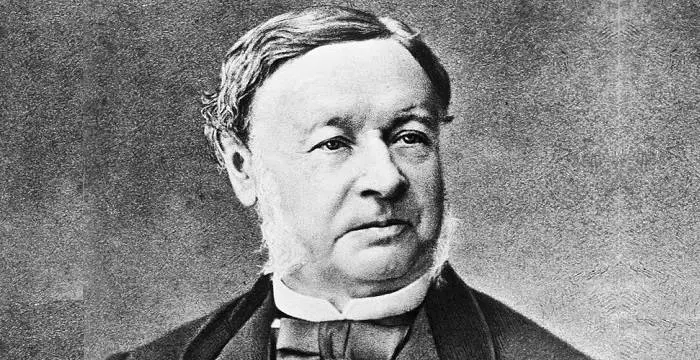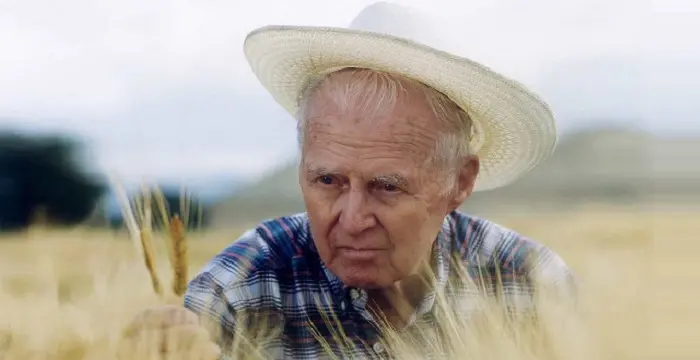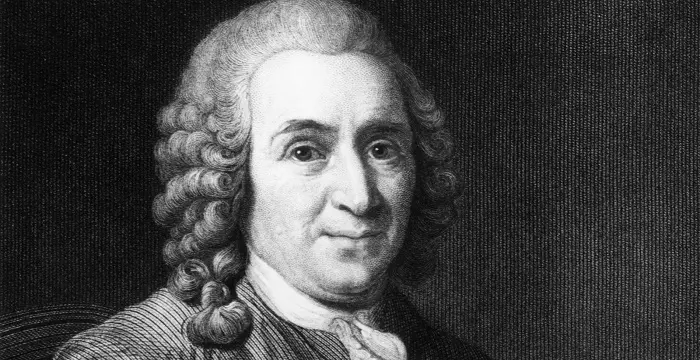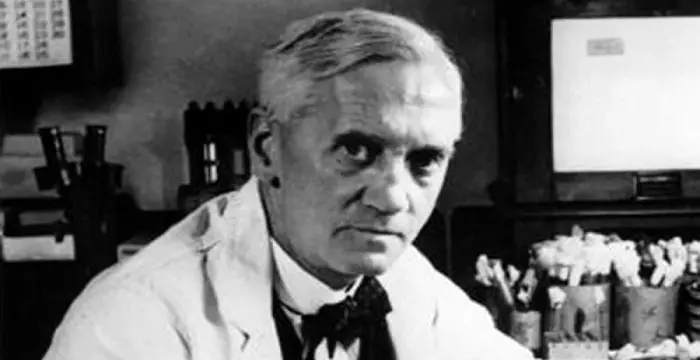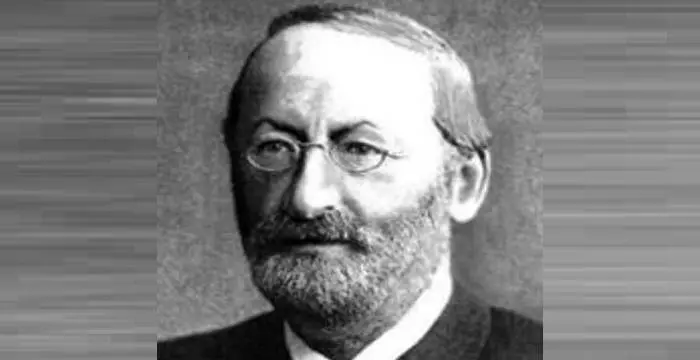
Ferdinand Cohn - Microbiology, Timeline and Family
Ferdinand Cohn's Personal Details
Ferdinand Cohn was a German biologist who is considered as the father of bacteriology and microbiology
| Information | Detail |
|---|---|
| Birthday | January 24, 1828 |
| Died on | June 25, 1898 |
| Nationality | Polish |
| Famous | Scientists, Biologists, Microbiologists, Bacteriologists, Founder of Bacteriology, Microbiology |
| Birth Place | Wrocław, Poland |
| Gender | Male |
| Sun Sign | Aquarius |
| Born in | Wrocław, Poland |
| Famous as | Founder of Bacteriology and Microbiology |
| Died at Age | 70 |
Ferdinand Cohn's photo
Who is Ferdinand Cohn?
Ferdinand Cohn was a German biologist born in the nineteenth century in Breslau, under German Kingdom. He is best known as the father of bacteriology and microbiology. A child prodigy, he entered the University of Breslau to study botany at the age of 16. However, because of his Jewish background he was not allowed to take his final examination. So he shifted to more liberal University of Berlin and gained his doctoral degree at the age of nineteen. Subsequently, he went back to Breslau to take up a teaching job at the Breslau University and remained there till his retirement. However, he became more famous as a researcher. He first started working with algae and established that protoplasm contained the basic characteristics of all life. He then went on to establish the existence of sexual process in those unicellular organisms. Later he concentrated on bacteria and classified them under four groups. His discovery of endospores in Bacillus subtilis is another of his important achievements. During his lifetime, he published more than 150 research reports. Under him, the University of Breslau became an innovative center for plant physiology and microbiology.
Childhood & Early Life
Ferdinand Cohn was born on 24 January 1828, in the Jewish quarter of Wroclaw, Poland. At the time of his birth, the town was known as Breslau and it fell under the Prussian Province of Silesia under German Kingdom. He was the eldest of his parents’ three sons.
As a child. Ferdinand was shy, studious and sensitive. His father, Issak Cohn, was a wealthy merchant, who recognized his talent early in life and spared no effort to nurture it. Ferdinand retained a sad memory of his overtly studious childhood.
Ferdinand began his education at the age of four. In 1835, he was enrolled at Maria Magadalena Gymnasium. In the beginning he advanced quite rapidly. Unfortunately he developed hearing impairment at the age of ten and after that his progress slowed down a bit. It also made him suffer emotionally.
He soon overcame such emotional impediment and entered the University of Breslau in 1842. He first took up philosophy, but encouraged by German botanist Heinrich Goppert, he soon switched to botany. However, because he was a Jew, he was not allowed to take the final degree examination.
Therefore, he shifted to the more liberal University of Berlin in October 1846 and received his doctoral degree in botany from there on 13 November 1847 at the age of 19. He spent two more years in Berlin studying botany under noted scientists of that time.
Among them was Christian Ehrenberg, who introduced Ferdinand to the study of microscopic animals and plants. Then the March Revolution broke out in 1848. Although he did not take active part in it Ferdinand was sympathetic to their ideology. This attitude sealed his career in Berlin and he returned to Breslau in 1849.
Career
In 1850, Ferdinand Julius Cohn began his career as a Privatdozent at the University of Breslau. This was an exciting time for the botanists. Shortly before this, Matthias Schleiden had established his cell theory and Hugo von Mohl had talked about protoplasm in plant cells.
Cohn, impressed by these revolutionary ideas, decided to focus on unicellular algae. He also believed that one must start by studying the cellular structure of simpler organism if one wanted to gain insight into the cellular structure of higher organism.
The third important factor was that, in 1848, Heinrich Goppert, under whom Cohn had studied botany at Breslau, had asked him to concentrate on algae. He had hoped that Cohn would be able to contribute to the study of flora of the cryptogamous plants of Silesia.
Therefore in 1850, Cohn began his study on unicellular algae Protococcus pluvialis with special emphasis on protoplasm. His father, impressed by his enthusiasm, bought him a powerful microscope; something the University of Breslau did not have. Shortly, it became his main research tool.
He believed that, just like any other plants, the stages of growth of microscopic organisms could be learned only by directly observing them. Accordingly, he used his microscope to examine each stage of their development. His description of the life histories of several algae species remains equally important today.
Sometime now, he came to the conclusion that protoplasm contained the basic characteristics of all life and that protoplasm in plants and the "sarcode" in animals were highly analogous, if not identical. In 1854, he also concluded that bacteria are plants, not animals.
In 1855, Cohn observed the formation of spermatozoa in Sphaeroplea annulina, a genus of green algae and followed the progress all the way to the eggs. In 1856, he observed the same phenomenon in Volvox globator, another species of green algae. Thus, he established the sexuality of the algae.
In 1859, he was appointed extraordinary professor of botany. The following year he published an important paper on the contractile tissues of plants. He had already said that contractility was not confined only to animal tissue; in this paper he highlighted the issue.
In 1865, he published another important paper on his experimental study of phototropism in microscopic organisms. In 1866, he was able to establish a separate Institute for Plant Physiology at the University of Breslau after a long struggle. It had been a top priority for him since 1847.
The Institute was first established in an erstwhile prison house. It had a small and simple marine aquarium, in which Cohn observed a new species of infusoria and published a paper on it.
This was also the time when he began cultivating marine plants and found that red algae of the Oscillaria family could survive in environments which no other plants could endure. In 1867, Cohn published another paper in which he suggested that these algae must have been the first inhabitants of earth.
He also suggested that the rest of the plant world might have evolved from these red algae. Subsequently, he began to classify these lower organisms. Although he was not entirely successful, it was indeed a pioneering attempt.
From 1868, Cohn directed his attention to bacteria. He studied their morphology and based on that he classified the different varieties of bacteria into four groups and six genera. At the same time, he cautioned that morphology could not be the sole criterion, the biochemical characters were also important.
In 1870, Cohn founded a new journal called Beiträge zur Biologie der Pflanzen (Contributions to the Biology of Plants), primarily for publishing the works done in the Institute of Plant Physiology. Later many of the innovative papers on bacteriology were published in this journal.
In 1872, Cohn was promoted to the post of full professor. In the same year, he tried to bring out an order into the chaos caused by the use of arbitrary names used in the study of bacteria.
He began by defining bacteria and then classified them into four groups on the basis of their external form. He then went on to establish that under these four groups there were six genuses of bacteria and they had no relationship with fungus.
He then went to prove that bacteria cannot survive if the temperature crossed 80°C. However, he was not sure about Bacillus subtilis as he found that it was more resistant to heat. Later, however, he was able to explain that.
Concurrently, he also established that long exposure to sub zero temperature do not kill bacteria. They are only made stagnant and become active as soon as the temperature is increased.
In 1876, Cohn met Robert Koch, then an unknown doctor. Cohn was quick to recognize his talent and not only helped him to publish his work on anthrax, but also helped him get a job in the Imperial Health Office. In the same year, he published his treatise on Bacillus subtilis. It is his last major treatise.
Major Works
Cohn’s introduction of a systematic study of the life histories of microorganisms like bacteria and algae is probably his most important work. He is also remembered for his discovery of the formation as well as germination of endospores in Bacillus subtilis.
During that time, scientists could not explain how Bacillus subtilis could reappear within a short period even after the container was thoroughly boiled because bacteria cannot survive in such high temperature. They began to believe that it was because bacteria could generate spontaneously.
Cohn refuted the idea as a fallacy and established that the Bacillus survived boiling temperature simply by genereting thermo-resistant spores. Afterwards they went back to their normal reproductive stages.
Awards & Achievements
In 1885, Ferdinand Cohn was awarded with the Leeuwenhoek Medal by the Royal Netherlands Academy of Arts and Sciences.
In 1895, he was awarded with the Gold Medal by the Linnean Society of London. Founded in 1788, it is the oldest active biological society of the world.
He was also named a corresponding member of the Accademia dei Lincei in Rome, the Institut de France in Paris, and the Royal Society of London.
Personal Life & Legacy
Ferdinand Cohn married Pauline Reichenbach in 1867.
He died on 25 June 1898, in Breslau.
// Famous Microbiologists
Louis Pasteur
Louis Pasteur was a French chemist and microbiologist who developed the first vaccines for rabies and anthrax. This biography of Louis Pasteur provides detailed information about his childhood, life, achievements, works & timeline.
Carlo Urbani
Italian epidemiologist Carlo Urbani was the first person who identified SARS as a highly contagious disease. Find out more about his life in this biography.
Hamilton O. Smith
Hamilton Othanel Smith is an American microbiologist who received the Nobel Prize for Physiology or Medicine in 1978. This biography provides detailed information about his childhood, life, career, research, achievements and timeline.
Ferdinand Cohn's awards
| Year | Name | Award |
|---|---|---|
Other | ||
| 0 | Linnean Medal | |
Ferdinand Cohn biography timelines
- // 1788 To 1895In 1895, he was awarded with the Gold Medal by the Linnean Society of London. Founded in 1788, it is the oldest active biological society of the world.
- // 24th Jan 1828Ferdinand Cohn was born on 24 January 1828, in the Jewish quarter of Wroclaw, Poland. At the time of his birth, the town was known as Breslau and it fell under the Prussian Province of Silesia under German Kingdom. He was the eldest of his parents’ three sons.
- // 1835Ferdinand began his education at the age of four. In 1835, he was enrolled at Maria Magadalena Gymnasium. In the beginning he advanced quite rapidly. Unfortunately he developed hearing impairment at the age of ten and after that his progress slowed down a bit. It also made him suffer emotionally.
- // 1842He soon overcame such emotional impediment and entered the University of Breslau in 1842. He first took up philosophy, but encouraged by German botanist Heinrich Goppert, he soon switched to botany. However, because he was a Jew, he was not allowed to take the final degree examination.
- // Oct 1846 To 13th Nov 1847Therefore, he shifted to the more liberal University of Berlin in October 1846 and received his doctoral degree in botany from there on 13 November 1847 at the age of 19. He spent two more years in Berlin studying botany under noted scientists of that time.
- // 1848 To 1849Among them was Christian Ehrenberg, who introduced Ferdinand to the study of microscopic animals and plants. Then the March Revolution broke out in 1848. Although he did not take active part in it Ferdinand was sympathetic to their ideology. This attitude sealed his career in Berlin and he returned to Breslau in 1849.
- // 1848The third important factor was that, in 1848, Heinrich Goppert, under whom Cohn had studied botany at Breslau, had asked him to concentrate on algae. He had hoped that Cohn would be able to contribute to the study of flora of the cryptogamous plants of Silesia.
- // 1850In 1850, Ferdinand Julius Cohn began his career as a Privatdozent at the University of Breslau. This was an exciting time for the botanists. Shortly before this, Matthias Schleiden had established his cell theory and Hugo von Mohl had talked about protoplasm in plant cells.
- // 1850Therefore in 1850, Cohn began his study on unicellular algae Protococcus pluvialis with special emphasis on protoplasm. His father, impressed by his enthusiasm, bought him a powerful microscope; something the University of Breslau did not have. Shortly, it became his main research tool.
- // 1854Sometime now, he came to the conclusion that protoplasm contained the basic characteristics of all life and that protoplasm in plants and the "sarcode" in animals were highly analogous, if not identical. In 1854, he also concluded that bacteria are plants, not animals.
- // 1855 To 1856In 1855, Cohn observed the formation of spermatozoa in Sphaeroplea annulina, a genus of green algae and followed the progress all the way to the eggs. In 1856, he observed the same phenomenon in Volvox globator, another species of green algae. Thus, he established the sexuality of the algae.
- // 1859In 1859, he was appointed extraordinary professor of botany. The following year he published an important paper on the contractile tissues of plants. He had already said that contractility was not confined only to animal tissue; in this paper he highlighted the issue.
- // 1867This was also the time when he began cultivating marine plants and found that red algae of the Oscillaria family could survive in environments which no other plants could endure. In 1867, Cohn published another paper in which he suggested that these algae must have been the first inhabitants of earth.
- // 1867Ferdinand Cohn married Pauline Reichenbach in 1867.
- // 1868From 1868, Cohn directed his attention to bacteria. He studied their morphology and based on that he classified the different varieties of bacteria into four groups and six genera. At the same time, he cautioned that morphology could not be the sole criterion, the biochemical characters were also important.
- // 1870In 1870, Cohn founded a new journal called Beiträge zur Biologie der Pflanzen (Contributions to the Biology of Plants), primarily for publishing the works done in the Institute of Plant Physiology. Later many of the innovative papers on bacteriology were published in this journal.
- // 1872In 1872, Cohn was promoted to the post of full professor. In the same year, he tried to bring out an order into the chaos caused by the use of arbitrary names used in the study of bacteria.
- // 1876In 1876, Cohn met Robert Koch, then an unknown doctor. Cohn was quick to recognize his talent and not only helped him to publish his work on anthrax, but also helped him get a job in the Imperial Health Office. In the same year, he published his treatise on Bacillus subtilis. It is his last major treatise.
- // 1885In 1885, Ferdinand Cohn was awarded with the Leeuwenhoek Medal by the Royal Netherlands Academy of Arts and Sciences.
- // 25th Jun 1898He died on 25 June 1898, in Breslau.
// Famous Biologists
Juliane Koepcke
Juliane Koepcke is a German-Peruvian biologist, who was the lone survivor among the 92 passengers and crew of the ill-fated LANSA Flight 508 that crashed in the Peruvian rainforest on 24 December 1971. Know more about her life in this biography.
Theodor Schwann
Theodor Schwann was a German physiologist who discovered the Schwann cells in the peripheral nervous system. This biography of Theodor Schwann provides detailed information about his childhood, life, achievements, works & timeline.
Norman Borlaug
Norman Borlaug was an American biologist known as the “Father of the Green Revolution”. This biography of Norman Borlaug provides detailed information about his childhood, life, achievements, works & timeline.
Richard Dawkins
Richard Dawkins is an English ethologist and evolutionary biologist. This biography of Richard Dawkins provides detailed information about his childhood, life, achievements, works & timeline.
Carl Linnaeus
Carolus Linnaeus was a renowned Swedish biologist popularly known as the ‘Father of Modern Taxonomy’ who founded the binomial nomenclature. Read on to know more about his childhood, career, profile and timeline
Alexander Fleming
Alexander Fleming was a Scottish biologist and pharmacologist who discovered enzyme lysozyme and antibiotic penicillin. This biography of Alexander Fleming profiles his childhood, life, research, discoveries, achievements and timeline.
Ferdinand Cohn's FAQ
What is Ferdinand Cohn birthday?
Ferdinand Cohn was born at 1828-01-24
When was Ferdinand Cohn died?
Ferdinand Cohn was died at 1898-06-25
Where was Ferdinand Cohn died?
Ferdinand Cohn was died in Wrocław, Poland
Which age was Ferdinand Cohn died?
Ferdinand Cohn was died at age 70
Where is Ferdinand Cohn's birth place?
Ferdinand Cohn was born in Wrocław, Poland
What is Ferdinand Cohn nationalities?
Ferdinand Cohn's nationalities is Polish
What is Ferdinand Cohn's sun sign?
Ferdinand Cohn is Aquarius
How famous is Ferdinand Cohn?
Ferdinand Cohn is famouse as Founder of Bacteriology and Microbiology
